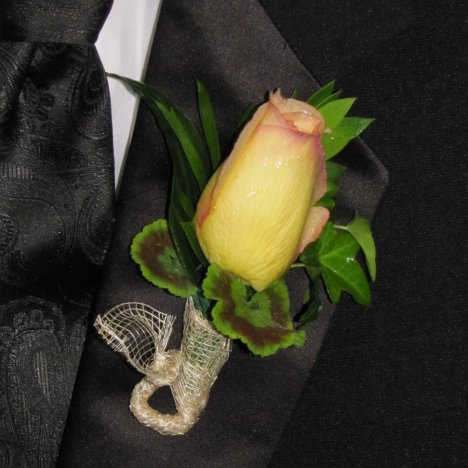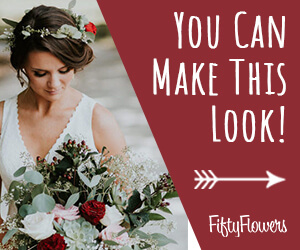yellow boutonniere
The yellow boutonniere will really pop when clusters of greenery surround the rose. From the top of the geranium leaf, you can see how the wire stitches across the face of the geranium leaf.
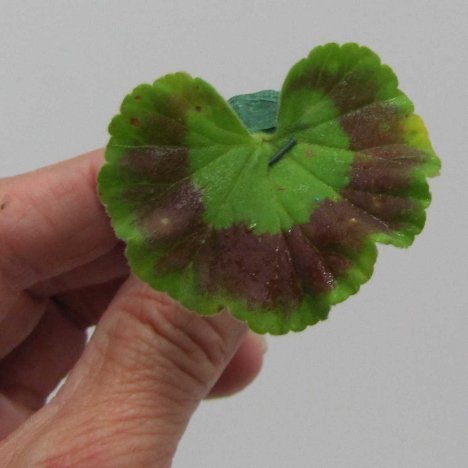
Fit this lovely leaf under the left side of the rose.
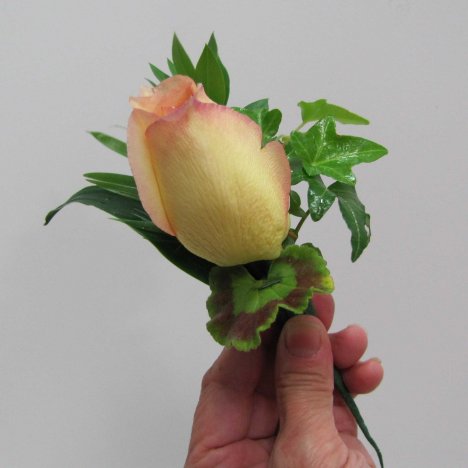
Another one or two geranium leaves, threading them with wire and taping as before. Fill out under the flower head until you have the rose completely surrounded with your greenery.
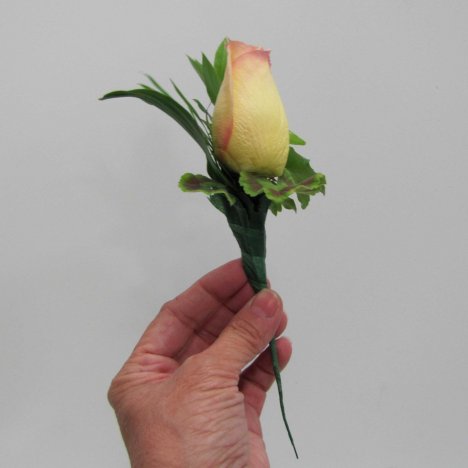
Wrapping the boutonniere stems with a ribbon is a common practice with florists. You can simply curl up the taped stem if you want to keep it simple.
Here I've placed the cut end of a burlap ribbon at the top of the stem, right under the head of the rose.
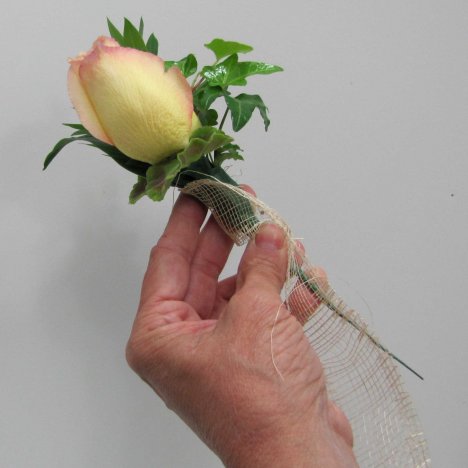
Pulling the ribbon tightly around the stem and wrapped around itself, the ribbon is continued to wrap in a downward spiral against the taped stem.
Don't loosen your grip or the ribbon might become unwound.
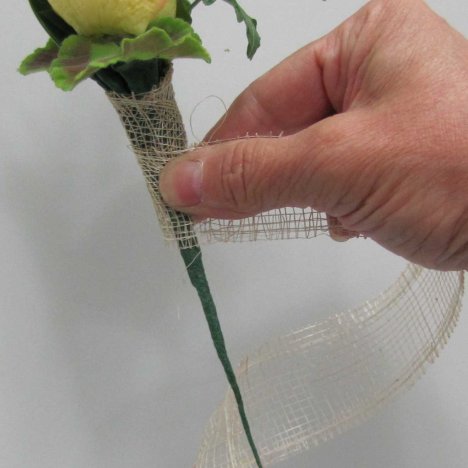
Taking it all the way to the bottom, you can see what a nice finish this casual ribbon is going to give to this boutonniere.
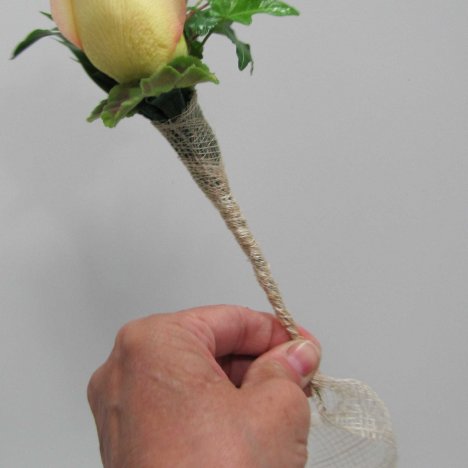
Once at the bottom, use your fingers or needle nose pliers to give the tip of a wire a tight twist, tightly securing the ribbon and holding it firm against the stem.
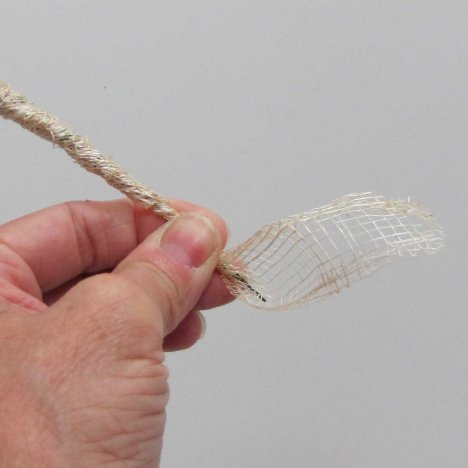
At this point, you can trim off the excess ribbon or leave a snip of tail as a decorative addition to the boutonniere.
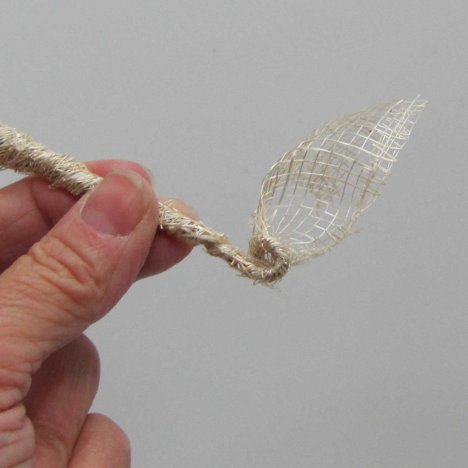
Using my fingers, I gently bend the stem upwards to create a decorative curl at the bottom of the design.
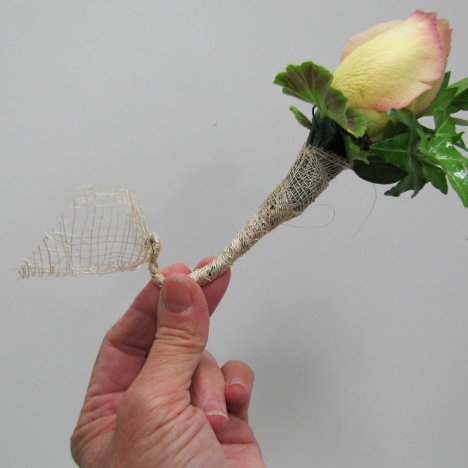
See how the twirled tail is finished with a decoratively curved upward spiral against the boutonniere base as shown below.
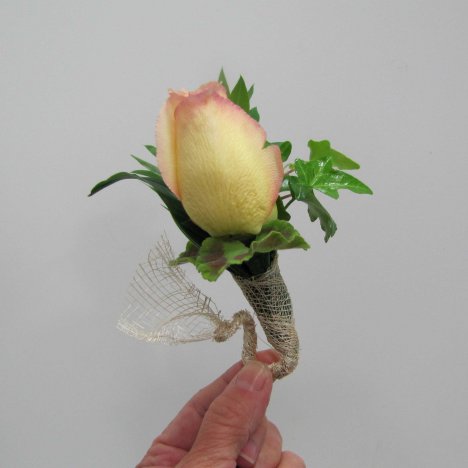
After I finish making a boutonniere, I mist it well with a flower sealant before refrigerating it. I use Finishing Touch by Floralife. This product hydrates the blooms and seals it against moisture loss. This is especially important for cut flowers (such as boutonnieres and corsages) with no water source.
Flower designs created in the home and stored in normal refrigerator risk drawing moisture OUT of the flowers. A normal florist cooler puts humidity INTO the unit, keeping the flowers better hydrated and extending the life. Misting with a sealant helps prevent petal transparency.
Never store your flowers in the far back of a home refrigerator. It is often colder in the back and you could run the risk of freezing your flowers.
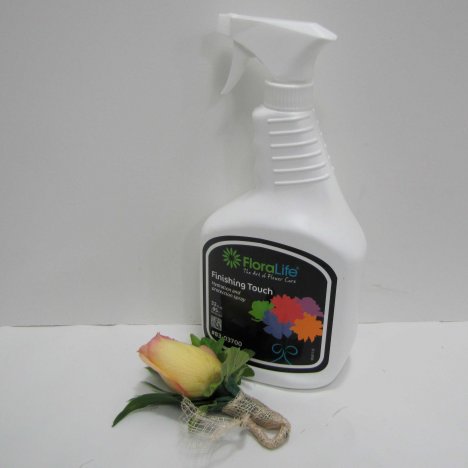
I added a single pink pearl corsage pin to enhance the pink edge of this yellow rose and to further secure the ribbon to the stem. You can see how the interesting foliage creates a beautiful look in a tight cluster around the central bloom.
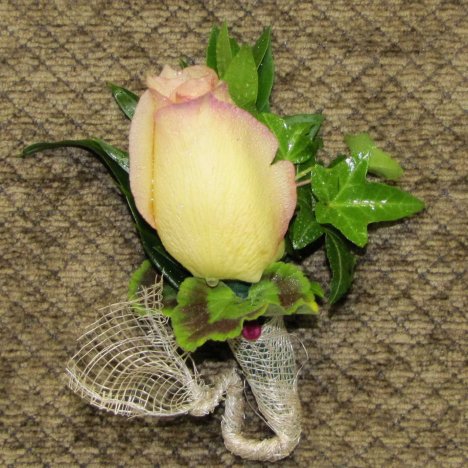
I carefully used scissors to trim up the rough edges of the burlap ribbon before pinning the boutonniere to the lapel of the tux.
Pin from the underside, using two corsage pins. Don't be afraid to push the pins directly into the rose head. You want to be sure that all sharp ends are buried into the boutonniere and that the flower is securely held and doesn't droop forward.
Another alternative is to use boutonniere magnets to hold the flower in place.
